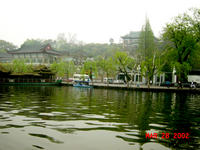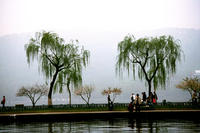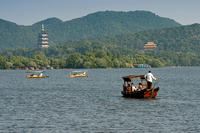You are in: Asia -> China -> West Lake Cultural L... , and traditional search or Image Gallery will yield results of this site only
West Lake Cultural Landscape of Hangzhou
| Site number: | 1334 |
|
| Type of site: | Cultural | |
| Date: | 9th century | |
| Date of Inscription: | 2011 | |
| Location: | Asia, China, Zhejiang, Hangzhou | |
Up to 75 images are shown here. Click on each for more details or on Image Gallery for more images.
| Description: | The West Lake Cultural Landscape of Hangzhou, comprising the West Lake and the hills surrounding its three sides, has inspired famous poets, scholars and artists since the 9th century. It comprises numerous temples, pagodas, pavilions, gardens and ornamental trees, as well as causeways and artificial islands. These additions have been made to improve the landscape west of the city of Hangzhou to the south of the Yangtze river. The West Lake has influenced garden design in the rest of China as well as Japan and Korea over the centuries and bears an exceptional testimony to the cultural tradition of improving landscapes to create a series of vistas reflecting an idealised fusion between humans and nature. --WHMNet's description is from WHC Site, where additional information is available. | |
| Xī Hú (Chinese: 西湖; literally "West Lake") is a famous fresh water lake located in the historic center of Hangzhou, the capital of Zhejiang province in eastern China. The lake is divided by the causeways of Sū Tí (苏提 / 蘇堤) , Bái Tí (白堤), and Yánggōng Tí (杨公堤 / 楊公堤). There are numerous temples, pagodas, gardens, and artificial islands within the lake. The West Lake has influenced poets and painters throughout the ages for its natural beauty and historical relics, and it has been among the most important sources of inspiration for Chinese garden designers, as evidenced by the impact it had on various Chinese classical gardens. It was made a UNESCO World Heritage Site in 2011, and was described to have "influenced garden design in the rest of China as well as Japan and Korea over the centuries, and reflects "an idealized fusion between humans and nature." --Wikipedia. Text is available under the Creative Commons Attribution-ShareAlike License. | ||
| Source: | http://whc.unesco.org/en/list/1334 | |
| Reference: | 1. UNESCO World Heritage Center (http://whc.unesco.org/en/list/1334). 2. Wikipedia. | |












































































